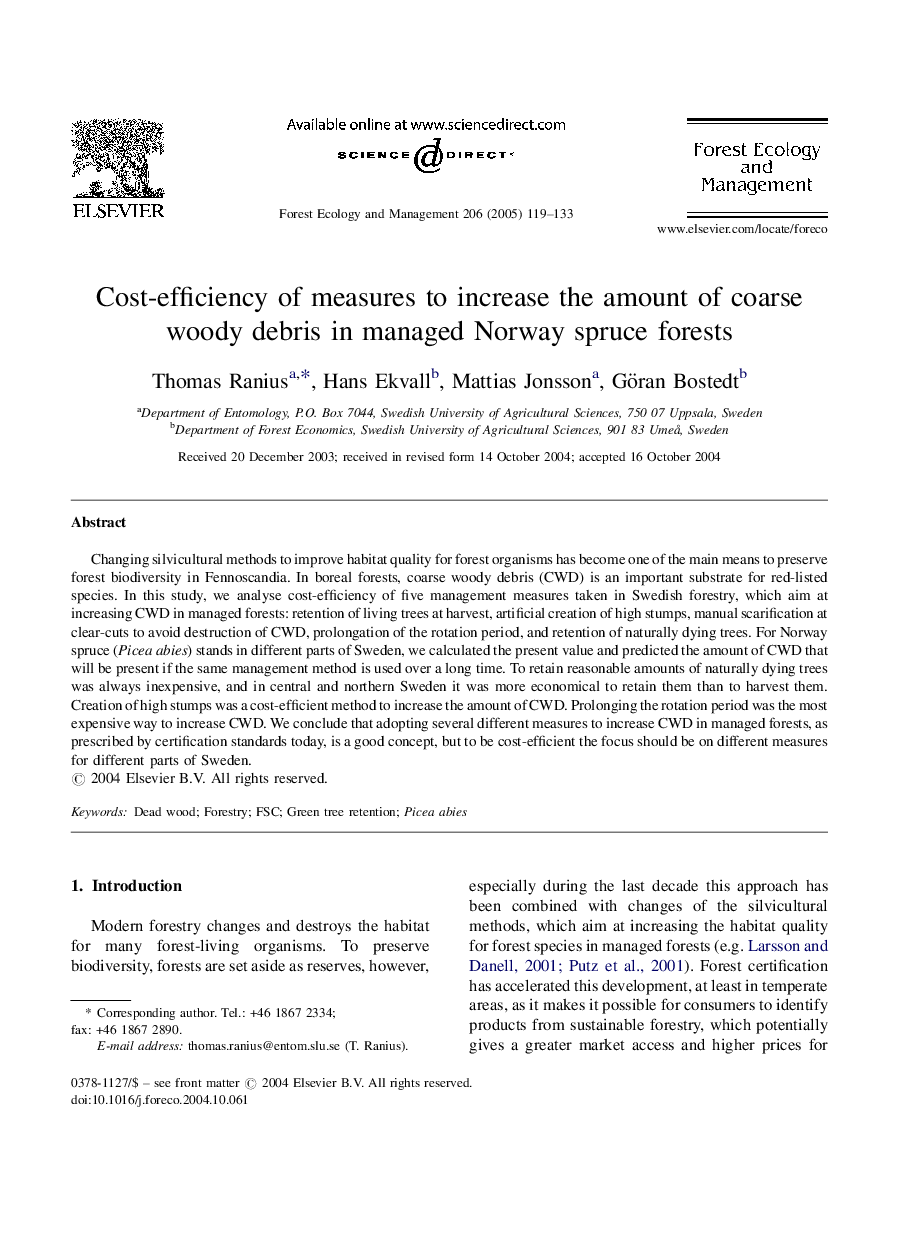| Article ID | Journal | Published Year | Pages | File Type |
|---|---|---|---|---|
| 9620466 | Forest Ecology and Management | 2005 | 15 Pages |
Abstract
Changing silvicultural methods to improve habitat quality for forest organisms has become one of the main means to preserve forest biodiversity in Fennoscandia. In boreal forests, coarse woody debris (CWD) is an important substrate for red-listed species. In this study, we analyse cost-efficiency of five management measures taken in Swedish forestry, which aim at increasing CWD in managed forests: retention of living trees at harvest, artificial creation of high stumps, manual scarification at clear-cuts to avoid destruction of CWD, prolongation of the rotation period, and retention of naturally dying trees. For Norway spruce (Picea abies) stands in different parts of Sweden, we calculated the present value and predicted the amount of CWD that will be present if the same management method is used over a long time. To retain reasonable amounts of naturally dying trees was always inexpensive, and in central and northern Sweden it was more economical to retain them than to harvest them. Creation of high stumps was a cost-efficient method to increase the amount of CWD. Prolonging the rotation period was the most expensive way to increase CWD. We conclude that adopting several different measures to increase CWD in managed forests, as prescribed by certification standards today, is a good concept, but to be cost-efficient the focus should be on different measures for different parts of Sweden.
Related Topics
Life Sciences
Agricultural and Biological Sciences
Ecology, Evolution, Behavior and Systematics
Authors
Thomas Ranius, Hans Ekvall, Mattias Jonsson, Göran Bostedt,
